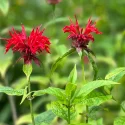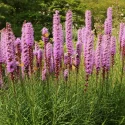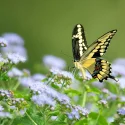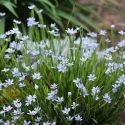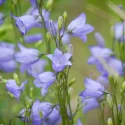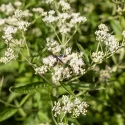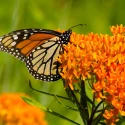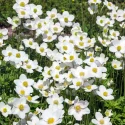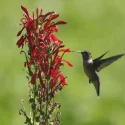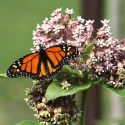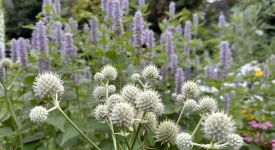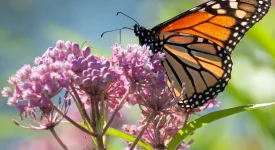First—let’s get the facts straight: goldenrod is NOT what causes fall allergies. (The plant that causes allergies is ragweed.) There are 75 species of goldenrod native to the United States, offering an option for every American garden. No matter the species, goldenrod’s specialty is delivering jaw-droppingly gorgeous flowers at the end of the growing season. Plant some goldenrod and watch the pollinators go crazy—especially in the fall. Scroll below to meet some favorites.
- Full Sun, Part Sun
- Height depends on species
- Fall flowers
- Pollinator lifeline
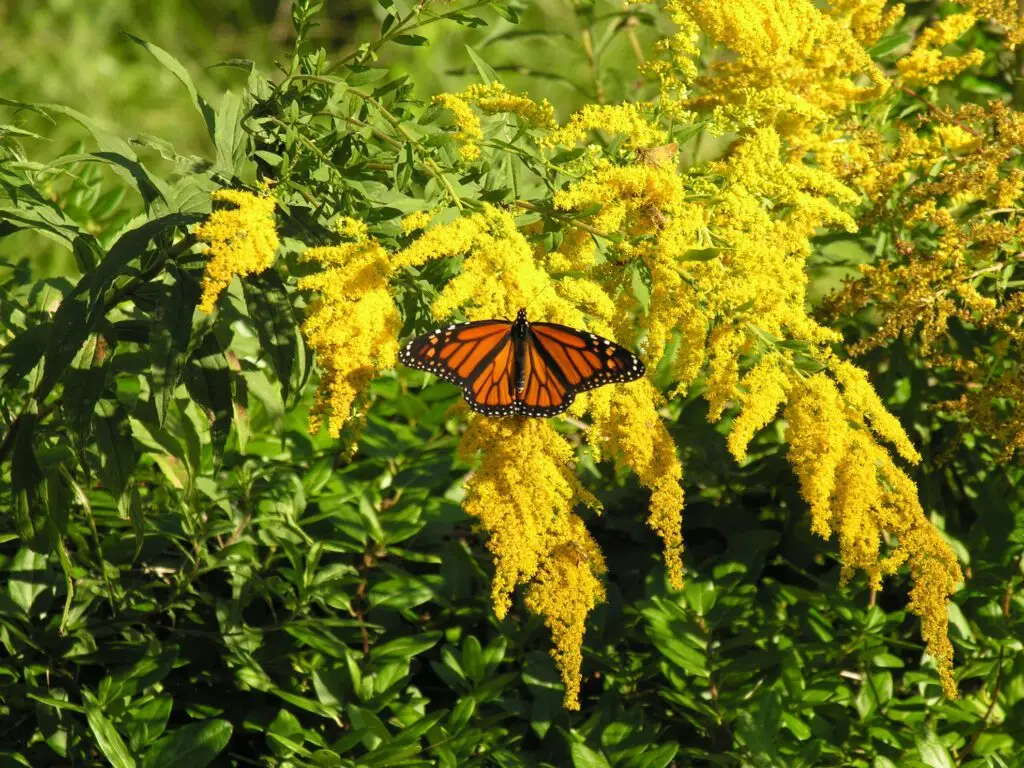
Dig Deeper
Explore the history, types, and where to plant native goldenrods
Table of Contents
Goldenrod is a super easy to grow native flower with 75 different species to consider. No matter where you live in the United States, there is a goldenrod for you. Goldenrods are perennials—plant once and they come back year after year. Let’s learn more about goldenrods, including how to plant them and what kinds to add to your garden.
Why is it important to plant native plants like goldenrod?
Planting native plants makes our yards and spaces gorgeous while helping the birds, butterflies, and animals (and helping save us time!) Here are three reasons why planting native is worth it:
- Without native plants, iconic animals like Monarch butterflies and songbirds won’t have the food or homes needed to survive
- Native plants save time and money: after the first year of getting established, native plants like goldenrod are happy with rain
- Native plants are gorgeous! Goldenrod is a perfect example of how beautiful and resilient native plants are—they are always the best choice for our gardens.
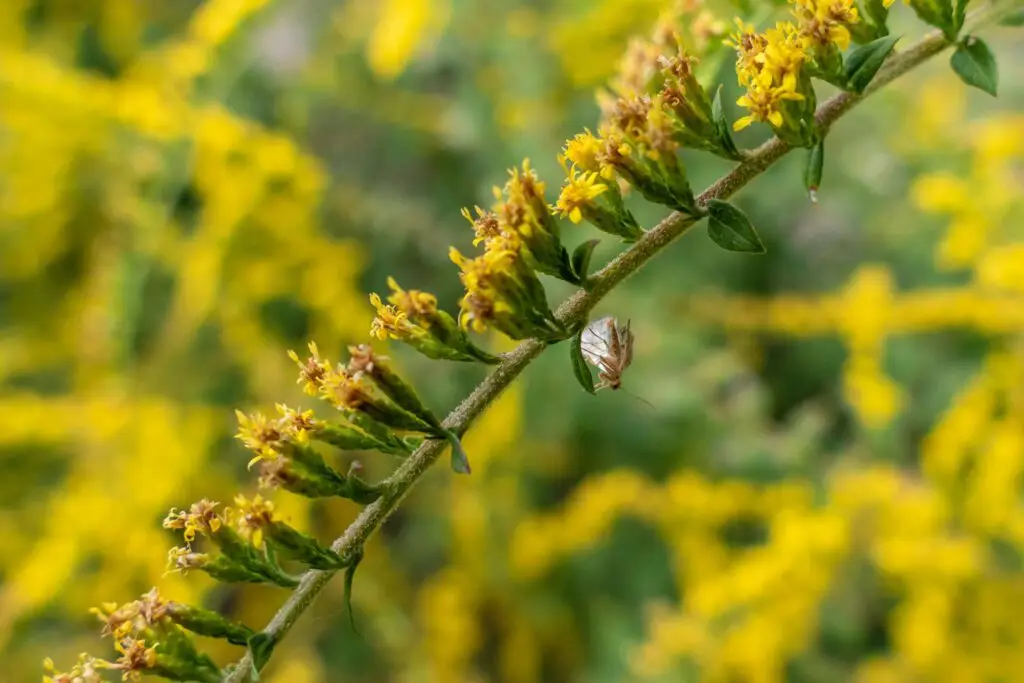
Native goldenrod species
There are 75 species of goldenrod native to North America. Here are seven species commonly found in local native plant nurseries.
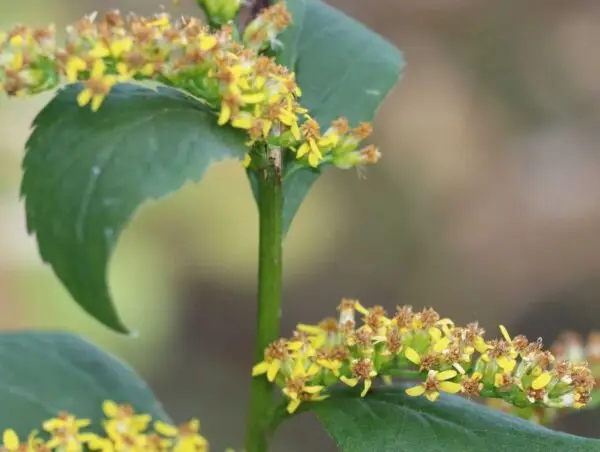
Blue-Stemmed Goldenrod
Solidago caesia
A goldenrod for shade! The flowers appear on little platforms from the stalk—it’s a singular, memorable shape. 1-3 feet tall, shade to part shade, flowers in late summer/fall.
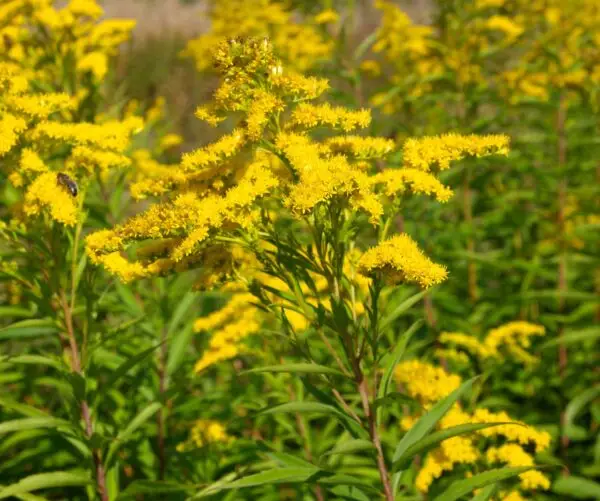
Canada Goldenrod
Solidago canadensis
This is the ‘classic Goldenrod’ you see in fields and sides of highways. It’s everywhere since it spreads so easily via its roots. This is good news when you have a large area to fill! 2-5 feet, full sun to partial shade. If you have a smaller garden, you can cut the stems in July to keep it shorter.
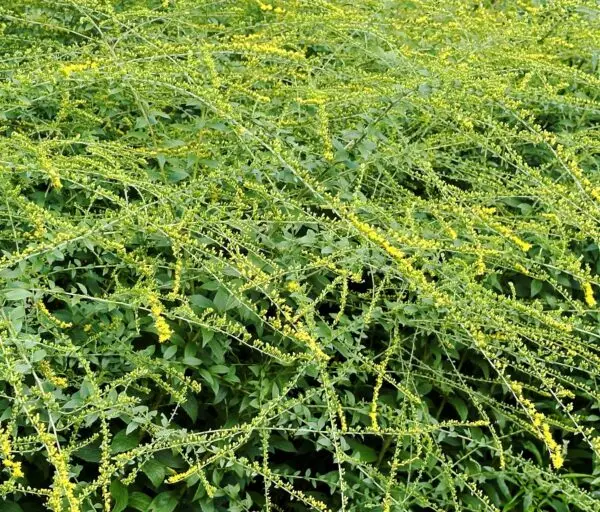
Early Goldenrod
Solidago juncea
Such a stunning plant; flowers cascade down like star trails. 1.5-3 feet, sun to partial sun, drought-tolerant. Super easy to grow and exceptionally photogenic. Flowers in the mid to late summer.
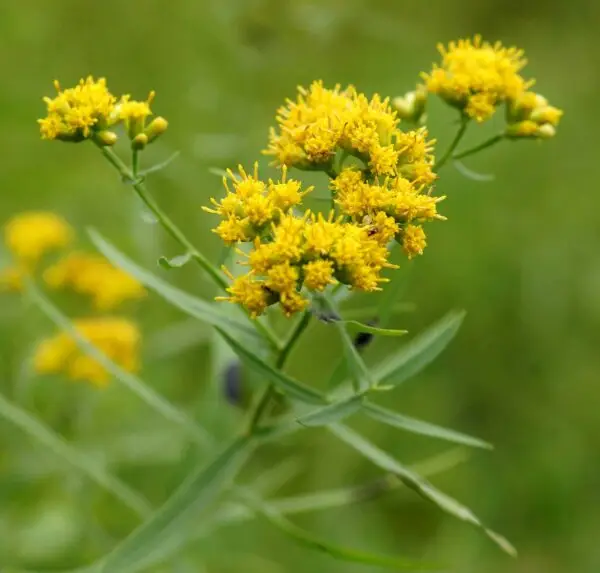
Grass-leaved Goldenrod
Euthamia graminifolia
A delicate Goldenrod, thanks to its needle-shaped leaves. Full sun, 1.5-3 feet tall, drought-tolerant, summer bloom time. This is a great plant for beginner gardeners: it thrives in a wide range of soil (wet to dry).
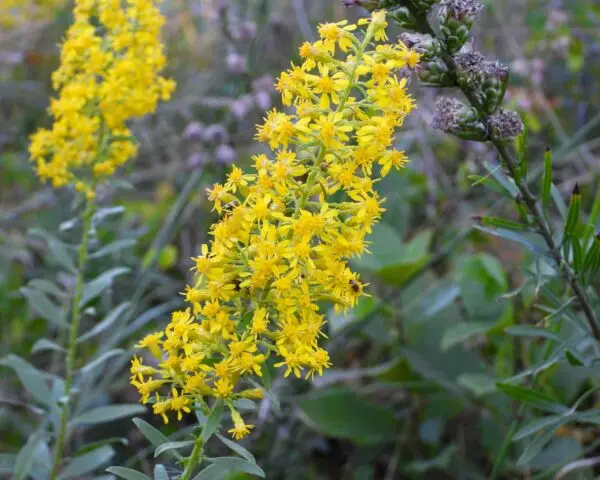
Showy Goldenrod
Solidago speciosa
Clumps of tiny yellow flowers create a showstopper moment. Full sun, 1-5 feet tall, drought-tolerant, late-summer/fall bloom time. Another great plant for beginner gardeners: it thrives in a wide range of soil (wet to dry).
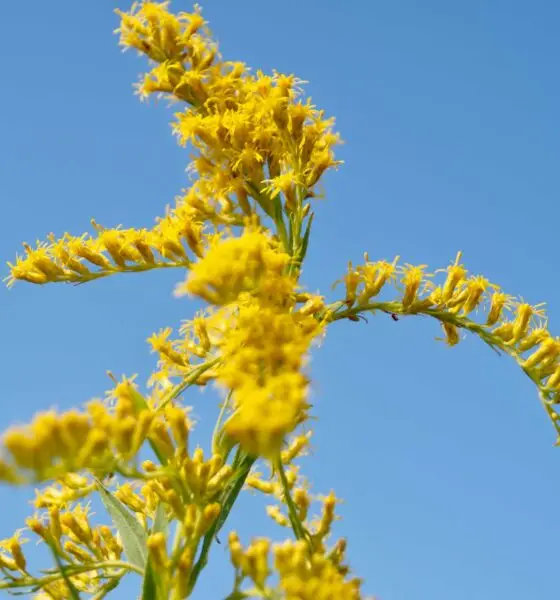
Tall Goldenrod
Solidago altissima
Be warned: this plant is TALL—3-7 feet! It can look like a small tree at its tallest. Full sun, late summer/fall bloom, drought-tolerant. Similar to Canada Goldenrod, it spreads quickly via rhizomes.
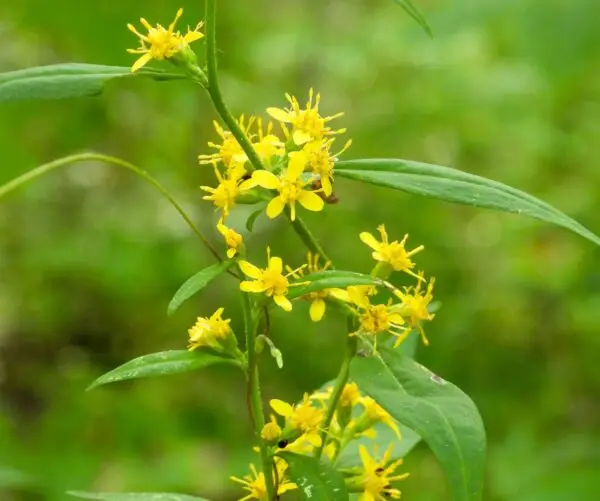
Zig-Zag Goldenrod
Solidago flexicaulis
What a fun shade plant! Tiny yellow flowers jut out from a zig-zagged stem in the fall. 1-3 feet and fuss-free after it’s established. Shade to part-shade.
And that’s not all…
We just touched the tip of the iceberg with these seven goldenrod varieties. A few other notable goldenrod species include…
- Stiff Goldenrod (Solidago rigida) has flowers on wide top
What are good Goldenrod pairings?
Goldenrod likes full sun or part sun areas. Pair it with other native plants that flower both at the end of the season—like native asters—along with spring and summer flowers, like Bee Balm, Coneflower, Joe Pye Weed, and Mountain Mint. And don’t forget to plant the monarch butterfly host plant: Milkweed.
Planting flowers that bloom throughout the season is the best way to plan a pollinator garden.
Native Flowers for the Spring
Native Flowers for Summer
Other native flowers for the fall
Let’s all plant goldenrod in our gardens to enjoy a late-season flower show and offer crucial food to migrating monarch butterflies on their migration south. Goldenrod is exceptionally easy to grow, and 75 native species offer lots of options for American gardens.
Spread the word—goldenrod is NOT the allergy monster (that’s ragweed!) Maybe it’s time for a new lawn sign? Happy planting!
Sources
- Nelson, Gil. Best Native Plants for Southern Gardens: A Handbook for Gardeners, Homeowners, and Professionals, (2010).
- Harstad, Carolyn. Go Native! Gardening with Native Plants and Wildflowers in the Lower Midwest. (1999), 209-210.














